
East Yorkshire Coast
This is a small part of our Road Around Britain which we started after the H.C.C. Rally at Sandtoft near Scunthorpe.
We had had a troubled journey up, when a tyre burst on the caravan, and we had it sent back to Hermitage. We continued to Newark to visit Anna, as we hadn't been able to get in touch with her to say that we weren't coming. We had a good weekend at the rally, which was at the Trolley Bus Museum, with excellent weather, except for a thunderstorm on the Sunday evening. Apparently parts of Yorkshire got really flooded.
On Monday, we revisited the village of Epworth, birthplace of Charles and John Wesley. We visited the rectory where they were born, and the Church where their father had been vicar. It was interesting to us, as we had seen much about John Wesley while in Georgia USA recently.
We stayed at a small CL at Alkbrorough, having visited the nearby ancient maze known as Julian's Bower.
There were views down to the rivers Trent and Ouse meeting to form the Humber.
Tuesday 21st June 2005
We left this pleasant little campsite at 9.45 and headed for Barton upon Humber. We reached the viewpoint to the bridge, after some difficulties, and took a photo, five years on from when we had visited before.

We enjoyed the old buildings of Barton and then continued over the bridge with the muddy waters of the Humber below us. The view to Hull was pleasant from this distance. We drove along the waterfront past Hull. We noticed a pleasant dock area. We found our way with much difficulty to a timber merchant where Adrian had hoped to get a piece of wood for the roof of the caravan. However we were out of luck.
We headed out of Hull and on to Paull, a small waterside village with just a single street beside the muddy Humber. We passed Fort Paull but didn't go in (We stayed here in 2007 for the HCC National Rally when it really flooded). We did stop briefly at the bird reserve and walk across to the river but we only saw one bird!
The road now went inland to Thorngumbald and then we drove down to Stone Creek. This, like a place we had visited on the other side of the Humber, looked very Dickensian. Our 1970’s book of the coast said that there were half-a-dozen boats in their mud berths. We wondered what it would be like now, but it was still just the same. The book described it as one of the most deserted coastal beauty spots in England. It certainly looked lost in time.
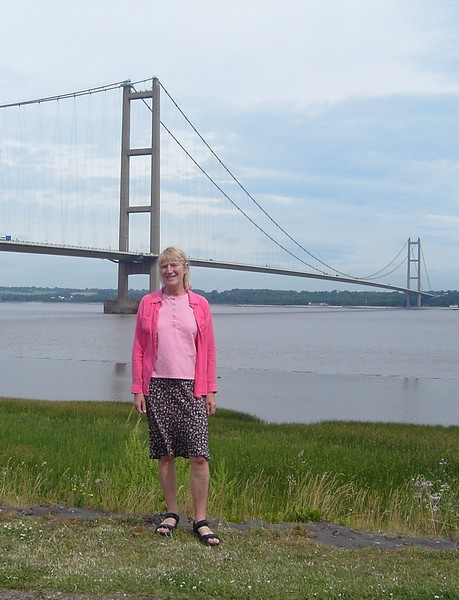
We walked along the rough road and across the bridge of the creek and saw that the road did go through. We were pleased about this as it would have meant a long drive back and round. Some people were waiting to start some work here and there was a large crane beside the one isolated house.
We drove past Sunk Island to Patrington which had an attractive church tower 189ft high, which could be seen from a long way off. We drove on to Kilnsea and Spurn Head. We deliberated whether to pay the £2.50 charge to drive on to Spurn Head, and stopped briefly by a bird hide beforehand. We decided to go in, and started off on the road to the lighthouse.
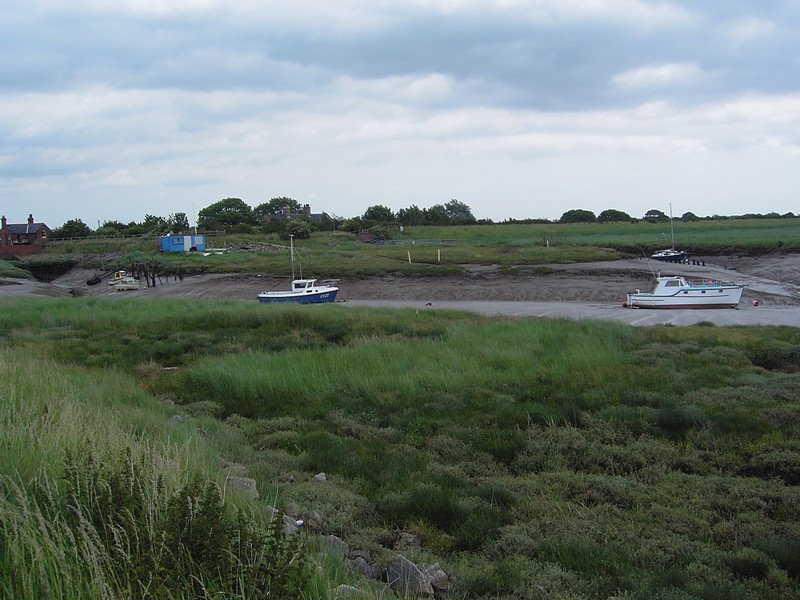
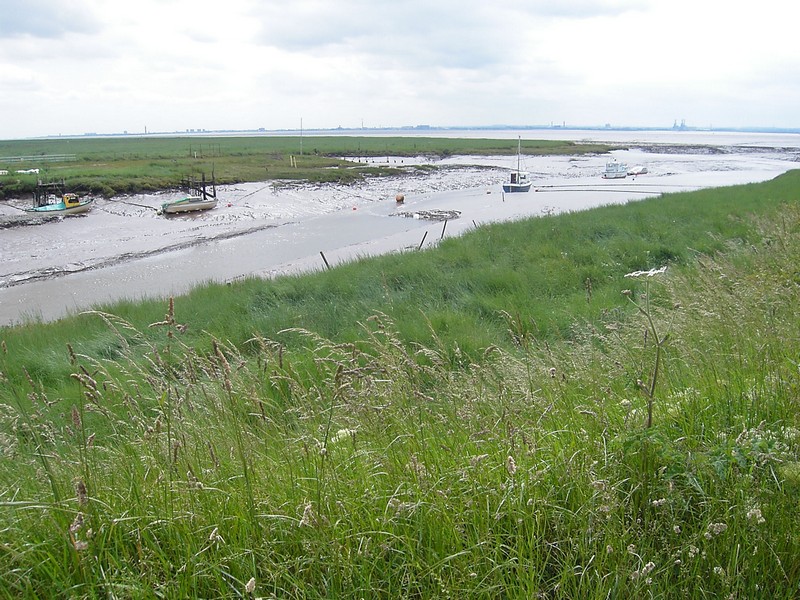
We had lunch in the van, with water either side of us. The road had 'moved' and in places a temporary road had been put down (In 2013 a storm washed the road away and the lighthouse cannot now be accessed by road at high tide). The road had originally been built during the Second World War, and there was also the remains of a railway built during the First World War. We parked some way before the lighthouse and had a lovely walk on the seaward side of the peninsula, around the point, and back past the lighthouse. We then left the beach and walked back on the headland to the Tiv. We drove back and stopped briefly at the Information Centre, in a humble little hut. We looked at the beach on the seaward side, which was sandy. Just after this we stopped at a C.L., very close to the water on the river side. We sat in the sunshine, and later had a barbie. We walked out along by the beach, enjoying this, the longest day, and coming back to the pub next door to the campsite.
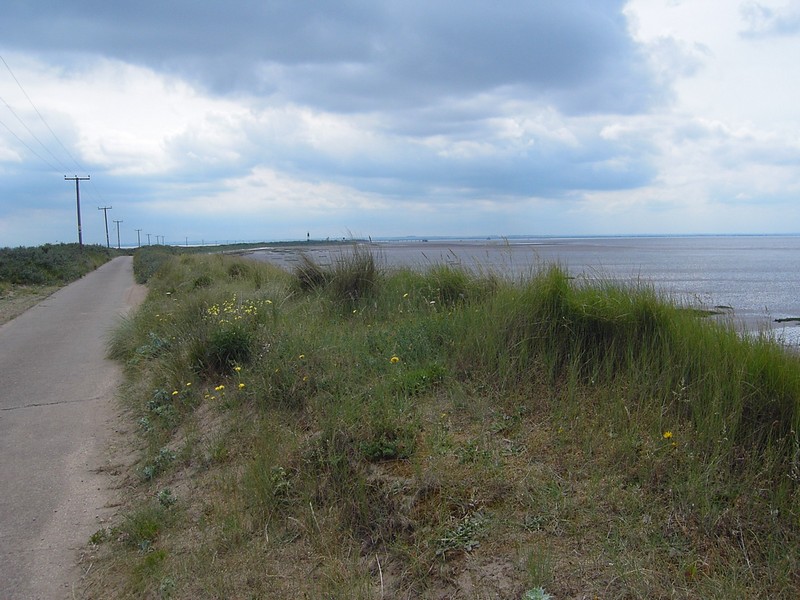
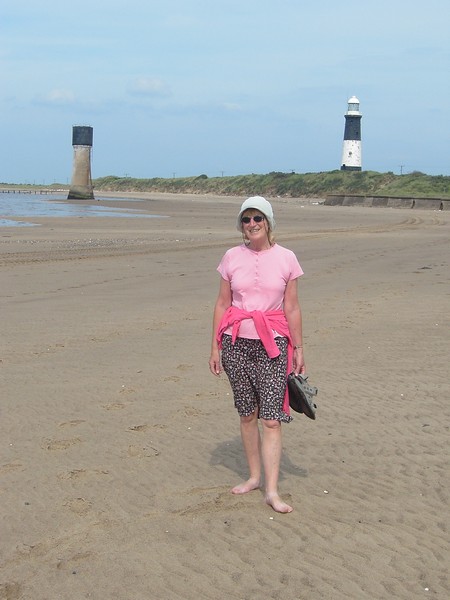
We watched the sun go down and got chatting to a couple from Epworth, who were camped behind the pub in their camper. He was a long distance lorry driver. We enjoyed the lovely sky although the evening got cold by the time we left at 10.30, when the full moon was just rising.

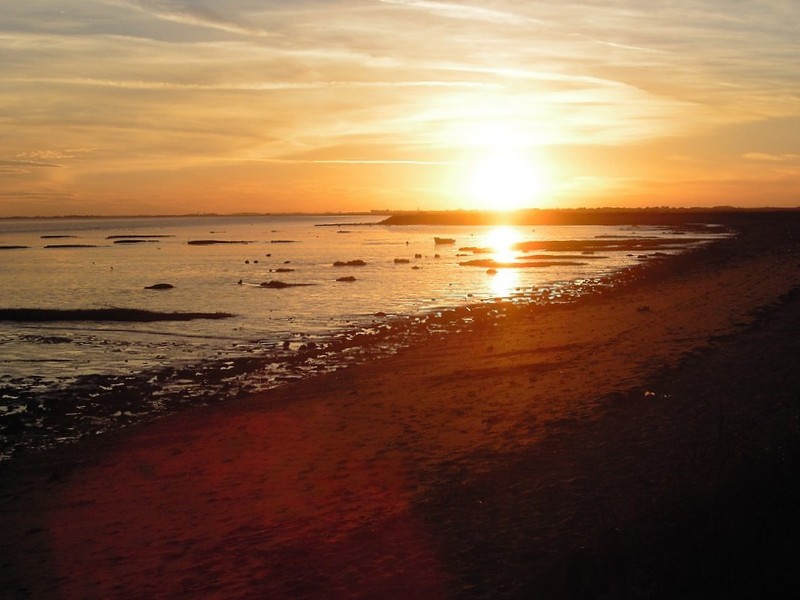
Rosie at 'Julian's Bower'
The Humber Bridge again, 5 years on
Muddy Stone Creek
Spurn Head
The beach and sunset, Kilnsea
Wednesday 22nd June
It was a lovely sunny morning. We sat outside for breakfast of strawberries and banana. Adrian refilled the water tank, as the water that we had didn't taste good. We left at 10 o'clock and drove on to Easington Beach, which was a huge sandy beach. We walked across it to the water's edge.
Here, and at all the places we visited today, there was a lot of coastal erosion, and the road just ended. North of the town was a huge North Sea Gas plant.
We passed an area of wind turbines, through fields of wheat, barley and oats. At Holmpton we took the road to just above the sea, where again there was erosion. The sun was very hot.
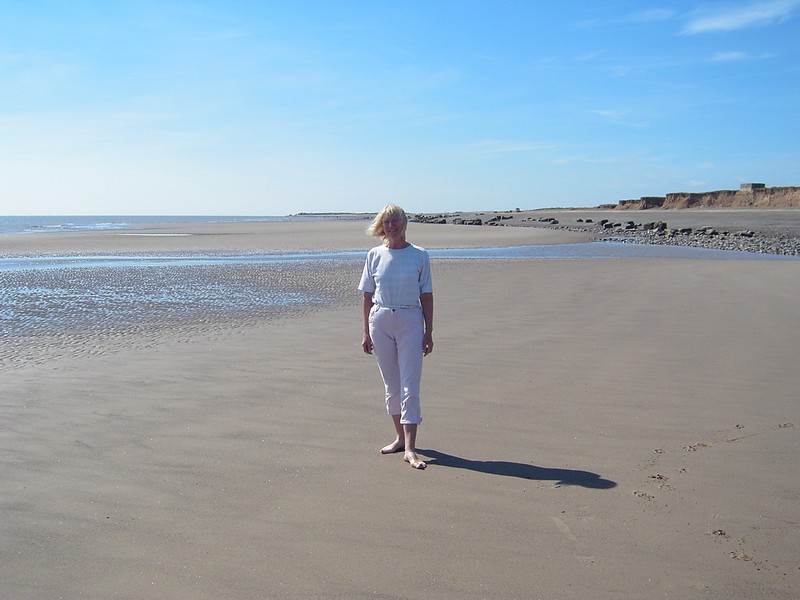
We drove on to Withernsea, where we shopped in Tesco. There is a lighthouse in the middle of the town. It seemed a very low-key resort. There was a pool of water on the beach, but it felt cool.
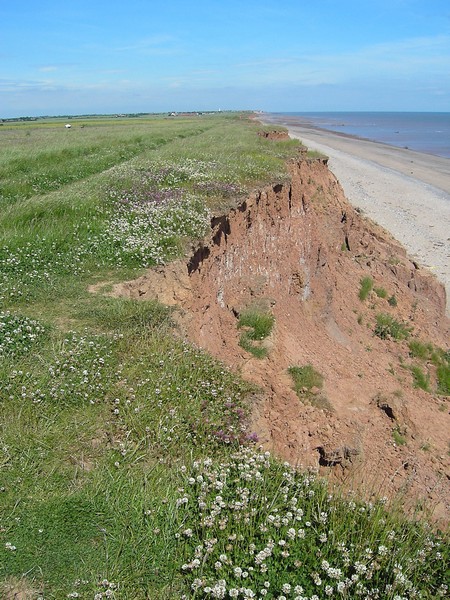
At Tunstall, we stopped by a caravan park, hoping to get to the sea, but we didn't reach it. The caravan park was high above the sea, and coastal erosion had meant that some buildings had been lost or demolished and there was a lot of broken glass around. It wasn't very attractive. The road we had hoped to take on from here was closed because of erosion so we drove on north via Hilston, where there was an attractive church, to Aldbrough.
Here we took the road to the sea, which again just ended above it, due to erosion, and once again it was next to a caravan park. We had lunch here on a patch of grass, and left at 2.30.
At Cowden the road was closed after the caravan park so we didn't go any further. At Mappleton there was a free car park above the sea, and a beach access. There were numerous signs warning of various dangers such as cliffs, erosion, and unexploded bombs etc.
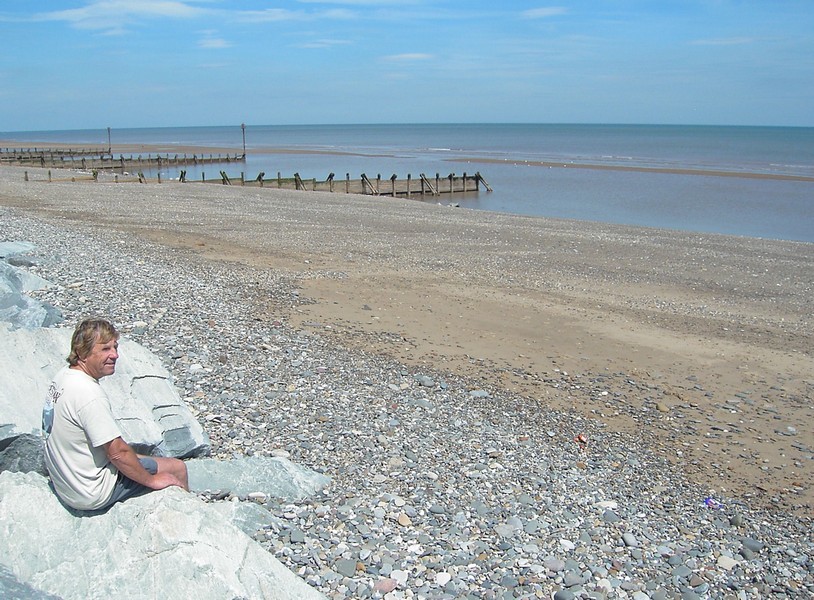
We had a nice laze on the beach here. It was pebbly by the water so I didn't have a paddle, but one person was out swimming.
At Hornsea we parked above the beach and went down on to it, beside a breakwater. One side of the beach was very high and on the other side it was lower.

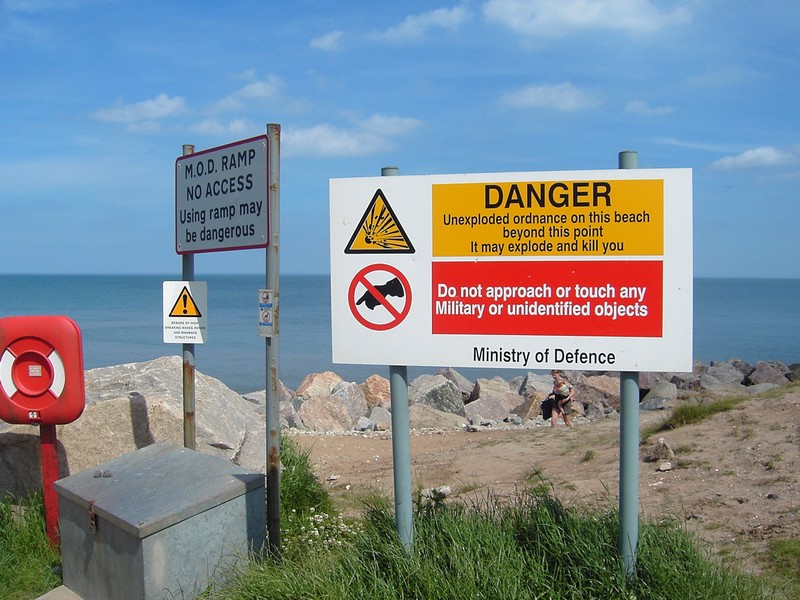
Again we had a paddle. Further on we walked on the new 'prom', which was perhaps a Millennium project. We read about a huge storm in 1871, when 100 boats were lost. We found our way inland to The Mere, a freshwater lake only half-a-mile from the sea and formed by glaciation. There were hundreds and hundreds of Canada geese and greylag geese here. We got talking to a couple in a motorhome about van insurance. They had lived on a boat for many years and had recently just travelled around Spain with their three dogs.
It was now 4.30. We drove to Atwick, where again the road just ended by a caravan park and a field of wheat, above the sea.
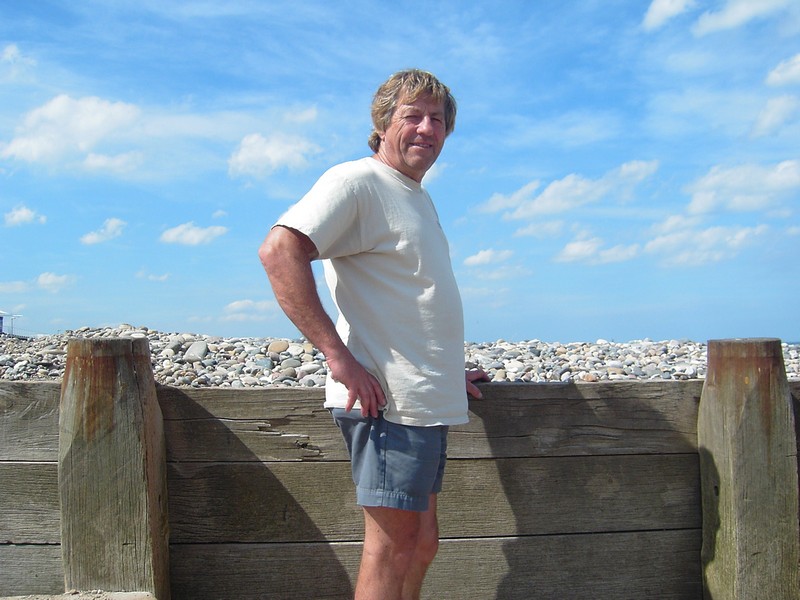
At Skipsea the road ended again by a few shacks. There were views to Flamborough Head. We stopped to view at 2 more places - at the last one, by a caravan site, there were concrete reinforcements. At Barmston there was another caravan park and coastal erosion.


A lot of sand martins were darting out from the cliffs. We read that this area has the fastest eroding cliffs in Europe.
We continued to a C.L. at Gransmoor Lodge, near Lissett, arriving at 6 o'clock. There was a static site here, but we were in a secluded field (£5).
It was a beautiful evening and we enjoyed a barbecue of pork, sitting in our isolation. We read through our diary of Yorkshire 97 and sat outside until after 10 o'clock. We had had a short walk around. It became very damp with dew.

Rosie on Easington Beach
Holmpton - one of the many places with coastal erosion
Adrian at Withernsea
Danger of erosion at Mappleton
Adrian at Hornsea
Attwick- what happened to the road?
Barmston - more coastal erosion
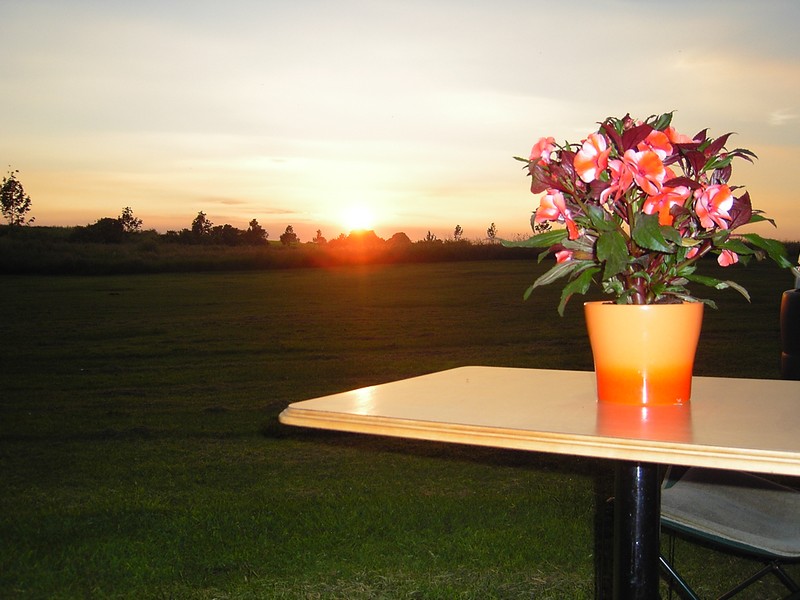
Lissett - nice place for a barbie, and then a sunset
Thursday 23rd June
We awoke to a clear blue sky and it was already very hot, in the eighties, when we had breakfast sitting outside in the sunshine. We left at 9.15 and drove a short way to Fraisthorpe beach. This wasn't on the map or in our book and we found there was a C.L. here and for £1.50 you could park on this area of beach. We drove in just to have a look, and then thought that it would be a nice thing to do. The man had said you could walk along from here to Bridlington along the beach and that it took about three quarters of an hour. On such a beautiful day this seemed a lovely idea to end our trip so we set off to walk along this huge sandy beach.
Bridlington was the end of this section of our Road Around Britain - we had reached here from the north in 1997 and thought it a pleasant town. That was in October, but now in midsummer, it really did seem a good old-fashioned pleasant English resort with lovely beaches, seaside shops, a harbour full of character and donkeys on the beach.
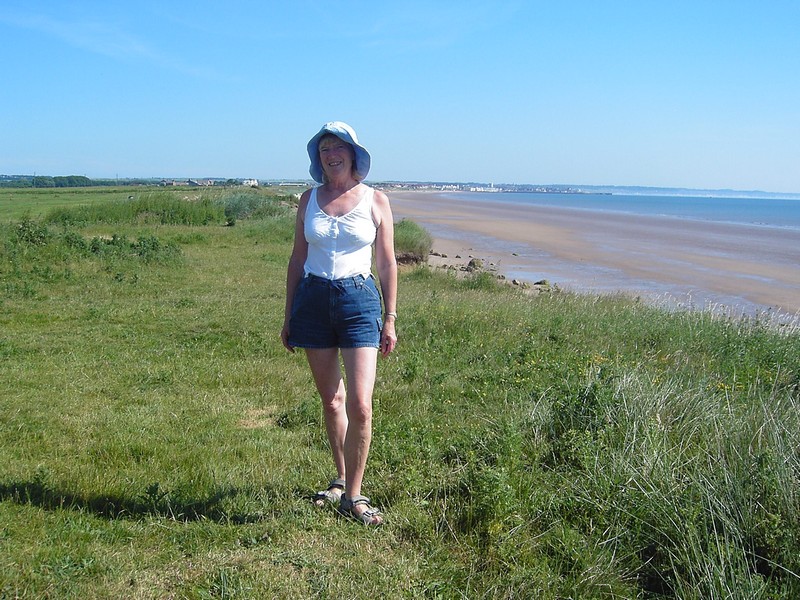
Rosie above the beach at Fraisthorpe
We reached the Tiv at about 1.30, and while Adrian had a rest inside, I walked across the wide sandy beach and had a pleasant, refreshing swim in the sea and then a short laze on the sand. We left here at 2.30 for our journey home, stopping first to get fuel at the M18/180 junction services. It was slow going round Birmingham, so at Warwick services we sat out on our seats and had tea in the sunshine - it was still very warm. We left here at 7.30 and arrived home at 9.45. We could see our injured caravan in the drive, and during the past week the garden had sprung into life and was really colourful. We had really enjoyed this part of our Road Around Britain - but the glorious weather helped.

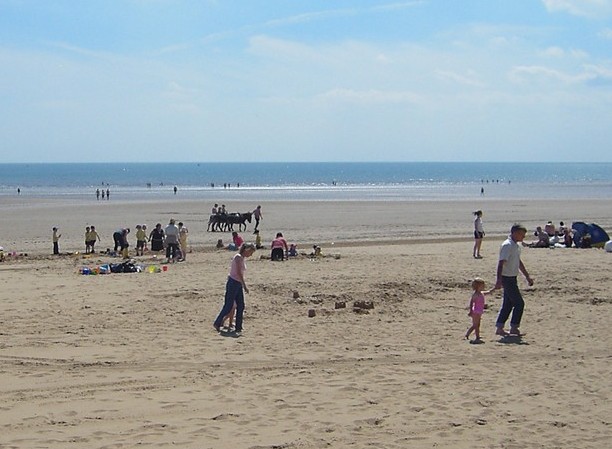
We mingled with the holiday makers, enjoying first an ice-cream and later some excellent fish and chips. There were several school parties around, but mostly it was families with young children and grandparents. We had a short laze on the beach and then began our walk back to Fraisthorpe.
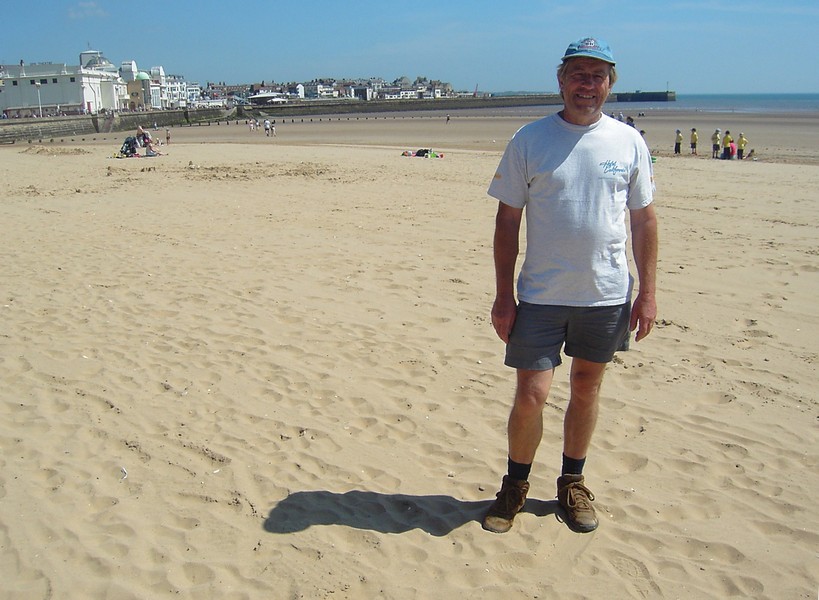
The harbour at Bridlington
Adrian on the wide sandy beach at Bridlington, with the crowds of holidaymakers







